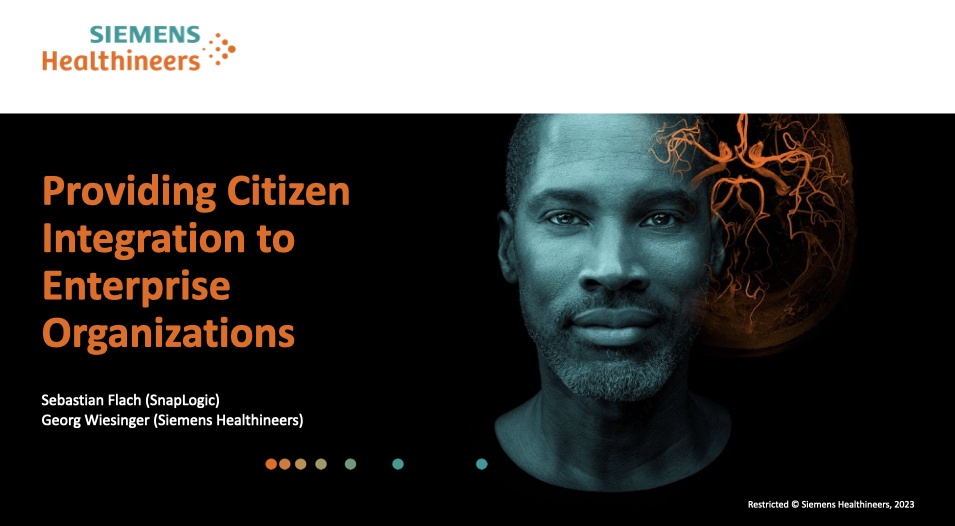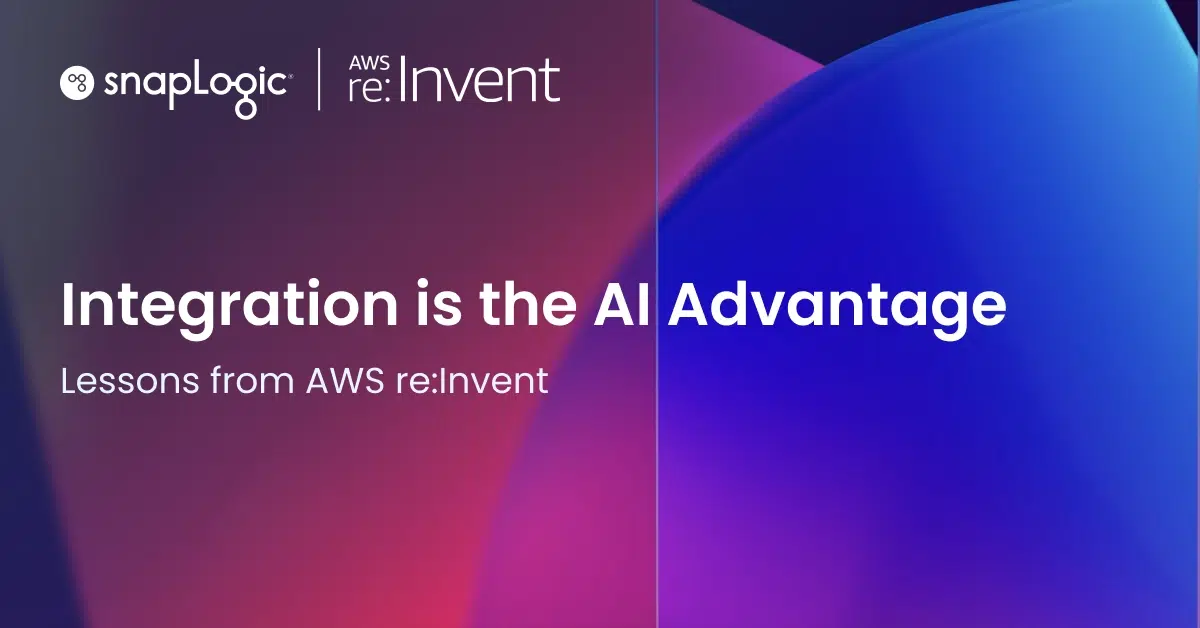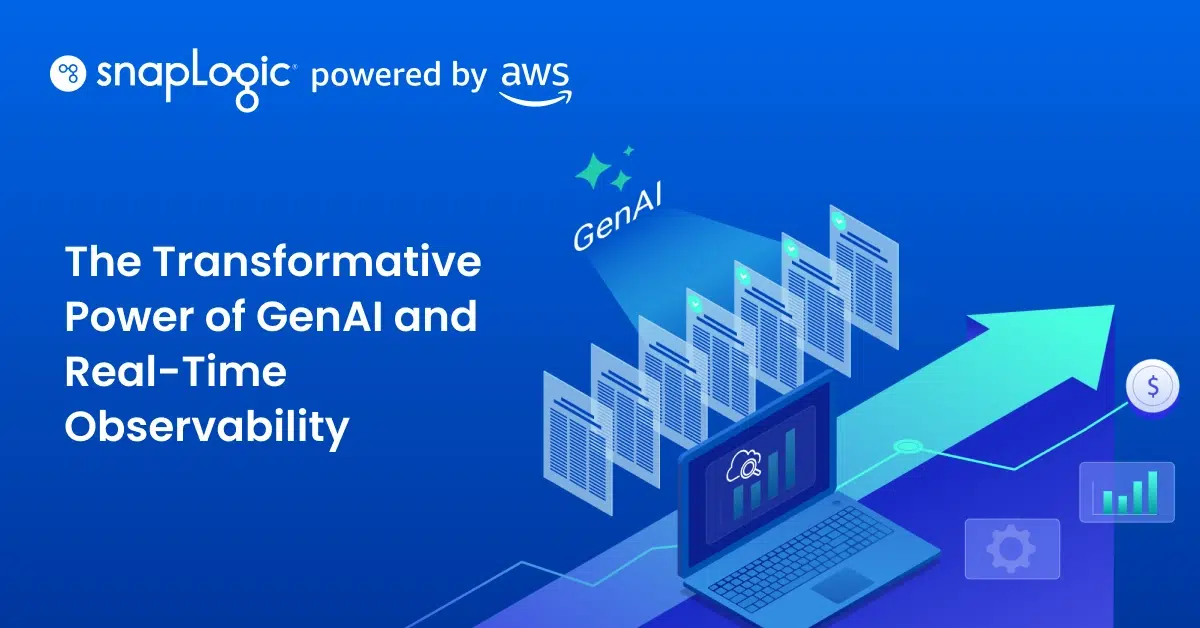Last week found me in Berlin for AWS Summit. These are always pretty high-octane affairs, with a whirlwind round of conversations with prospects, customers, and partners. The SnapLogic team was there in force, and my talented colleague Sinem made this amazing video which gives you a small taste of what the event was like.
The transition from builders to buyers was a prevalent theme, both during the partner day on Wednesday, and throughout the Summit proper on Thursday.
Technical solutions to business needs
The move away from individual technical components to packaged solutions to business problems was evident. Conversations were rarely about feeds and speeds, at least initially; those topics might come up later once agreement had already been reached on fundamental goals, and as a point of comparison between different technical approaches to the same business problem.
Instead, attendees wanted to start the conversation by talking about business problems, articulating them to us so that we could understand their situation. If you think about it for a moment, this is exactly how it should be: the people on the inside know their own business domain much better than any external vendor or consultant can. Meanwhile, technology specialists know their own product best, but need to have the business context explained to them so that they can suggest the best application of the technology.
The problem is that the business requirements are so varied and diverse that there is no one technical solution to address them all. Even if core business processes can all run in one mega-platform like SAP or Salesforce, there will always be the need for specialist tools around the edges — and integrating these tools presents its own set of challenges.
Exchanging data with one app is no big deal in these days of SaaS tools with open APIs. Once you have more than a handful of these connections, though, things start to get a bit more complex. Too many point-to-point integrations start to look a lot like the proverbial bowl of spaghetti instead of a nice neat rational architecture diagram.
Meshing gears
One approach that is emerging to address that problem of complexity is the data mesh. There is not (yet) an agreed-upon set of ingredients to a data mesh; rather, it’s an aspirational approach to making data available easily, wherever in the organization it needs to be. While most data mesh proposals assume distributed data storage, some fall back on existing centralized data stores and focus on enabling horizontal access and collaboration on top of that.
There was a fascinating conversation at the Summit about how to facilitate adoption of a data mesh approach. Proposals for data sharing in the past have often foundered on the asymmetrical incentives involved: consumers want access to the data, but there is very little direct value to the owners of the data in providing it, and often substantial effort is required. It’s not that they are actively locking down access, at least beyond what is required for security and compliance best practices; it’s just that the incentives were not aligned.
The creation of centralized data teams did not resolve the problem, it just moved it to a different place in the org chart. Instead, the recommended approach is to move to a more federated approach: a virtual data team with representatives in each business domain. This approach will actually unlock all the sought-for benefits of all of those individual data projects.
How SnapLogic enables your data mesh goals
This is where SnapLogic can fit in very well, enabling that shared data expertise to become a practical reality that can deliver concrete business results.
Connect anything to anything
With over 700 connectors, our platform makes it seamless to connect pretty much any tool that an individual team is getting value from — whether in the cloud, on-premises, or any combination of the two.
Get everyone involved
SnapLogic’s easy-to-use graphical interface, enabled by AI features (soon to be augmented with SnapGPT), means there is no technical bottleneck through which requests need to pass. Instead, domain experts can get involved directly in defining how data should be made available wherever it can add most value.

Georg Wiesinger, Head of Hybrid Cloud Automation & Integration at Siemens Healthineers, gave a presentation during the summit about the value he sees from getting more of his colleagues involved in data integration projects. Siemens Healthineers has over 350 of these “citizen integrators” actively working on the SnapLogic platform, with huge benefits in smoother collaboration and faster time-to-deployment of services based on this decentralized approach. See here for more information on how SnapLogic is enabling Siemens’ key business goals.
Eliminate friction
The SnapLogic iPaaS capabilities eliminate the friction that all too often prevents access to data that the organization has already gathered, but is not available for others to use. This is how the data mesh dream can become real: distributed access to data, wherever it can provide the greatest business value.
This message resonated strongly with attendees of AWS Summit Berlin, and my colleagues have a busy few weeks ahead of them following up on all those conversations. If you too would like to know more, please reach out and we’ll set up time to understand your goals and discuss how our technology can help you reach them.










